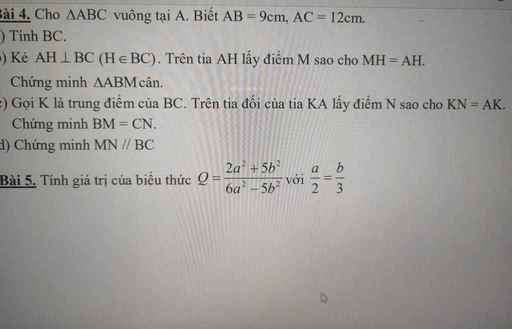a: Thay x=-2 vào A, ta được:
\(A=\dfrac{1}{4}\left(-2\right)^4+\dfrac{1}{2}\cdot\left(-2\right)^2-5\)
\(=\dfrac{1}{4}\cdot16+\dfrac{1}{2}\cdot4-5\)
=4+2-5
=1
b: \(A=\dfrac{1}{4}x^4+\dfrac{1}{2}x^2-5\)
\(=\left(\dfrac{1}{2}x^2\right)^2+2\cdot\dfrac{1}{2}x^2\cdot\dfrac{1}{2}+\dfrac{1}{4}-\dfrac{21}{4}\)
\(=\left(\dfrac{1}{2}x^2+\dfrac{1}{2}\right)^2-\dfrac{21}{4}\)
ta có: \(\dfrac{1}{2}x^2>=0\forall x\)
=>\(\dfrac{1}{2}x^2+\dfrac{1}{2}>=\dfrac{1}{2}\forall x\)
=>\(\left(\dfrac{1}{2}x^2+\dfrac{1}{2}\right)^2>=\left(\dfrac{1}{2}\right)^2=\dfrac{1}{4}\forall x\)
=>\(A=\left(\dfrac{1}{2}x^2+\dfrac{1}{2}\right)^2-\dfrac{21}{4}>=\dfrac{1}{4}-\dfrac{21}{4}=-5\forall x\)
Dấu '=' xảy ra khi x=0















